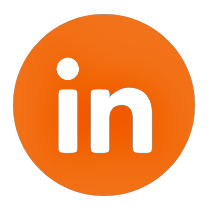 Immediately following a networking event, all kinds of possibilities are swirling around your head—and you feel totally pumped. You’ve just met dozens of new, interesting people, and you feel confident you’ll stay in touch with each and every one of them. However, once you get home, a whole other reality sets in, and you realize it makes sense for you to only contact a small handful of these folks.
Immediately following a networking event, all kinds of possibilities are swirling around your head—and you feel totally pumped. You’ve just met dozens of new, interesting people, and you feel confident you’ll stay in touch with each and every one of them. However, once you get home, a whole other reality sets in, and you realize it makes sense for you to only contact a small handful of these folks.
So you sit down to compose your enthusiastic follow-up letters, and much to your surprise, you draw a blank on the specific interactions you were hoping to recap from 48 hours ago. You do your best to come up with personalized emails, (ones that’ll hopefully be commensurate with the genuine connections you experienced) but the details of each conversation are now eluding you. Finally, after racking your brain for too many minutes, you say to yourself, “Whatever. This is good enough for a follow-up email.” And you hit the send button.
This has happened to me more times than I’d like to admit. Luckily, my discomfort led me to devise a method for recalling nuggets of information to be included in my follow-up emails—which resulted in more follow-up meetings.
Before I reveal my process, I think it’s important to clearly identify the #1 purpose of networking functions: First and foremost, they provide a forum for meeting, and connecting with, a variety of business associates you wouldn’t otherwise encounter in your day-to-day activities. This is significant—and well worth noting: Generally speaking, networking functions are not intended for amassing a plethora of prospects, and if you approach people at these events driven by an underlying prospecting agenda, you will shoot yourself in the foot! People will sense your intentions immediately and do whatever it takes to get away from you as fast as possible! (See my article on being a top 1% networker.)
That said, at the conclusion of any initial conversation with a new business associate, it is customary to exchange business cards, which, as it turns out, serve as the perfect tool for logging crucial details for future reference.
Following any interactions that seemed notably worthwhile, take a few minutes to jot down (on their business card) the outstanding points from your conversation. Include a physical attribute such as hair, eyes, clothing, etc., anything that will help you recall the identity of this person. Name one or two business associates who might benefit from meeting this person—perhaps someone you mentioned during the conversation. Also include a non-business related detail from your exchange that might easily be forgotten. (A few years ago, one of my most successful follow-up letters included the detail of a first-time dog owner who’d recently adopted a chocolate lab.)
Before you put the card in your pocket, rate how well you connected with this person. Nothing fancy; a simple 1-2-3 system will suffice. Customarily, I use a combination of factors to come up with the rating, such as how likable they are, how many things we have in common, how professional they are, how well connected they seem, how easy it would be for them to connect with people in my network, etc.
Once you’ve rated the interaction, jot the number down in the top right hand corner of your card and circle it. This will save you time later when you’re considering developing a deeper relationship with some of these contacts.
The most critical piece of the process, however, will take place after you’ve left the gathering. Rather than focusing on what this person might do for you and your career, take some time to identify the value you could uniquely bring to them and to their endeavors. What particular knowledge, expertise, or inside track might this person find of value in you that no one else they’d met at the function would likely provide?
Here’s an example from my own life: I recently made a great connection with someone from DC who was looking to expand his presence in the Williamsburg area. It just so happens, I’m a board member for the Greater Williamsburg Chamber and Tourism Alliance, and as such, was able to offer this man access to a professional network in that very region.
It’s also important to explore ways you might offer personal value as well. Going back to my example of the dog owner…
Back in the late 90s, I’d met one of the top leaders at Capital One, and our conversation (and subsequent follow-up) revolved around sporting dog breeds. The fact is, for most of my life, I’d raised top of the line Chocolate Labs—and that unique, non-business-related detail turned out to be of great value to this man, serving as a bridge to creating a relationship that ultimately generated 8 years of consistent business.
The last step in this process also occurs later—once you’ve returned to the office. All the information you squeezed onto those business cards needs to be loaded into your database for ongoing reference.
Now you are ready for your follow-up correspondence.
Here are two examples of follow-up letters. You’ll see a world of difference between them. One is specific to the interaction from the networking event, and the other is 100% generic, and thus, impersonal. It’s also important to note, the timing of the letters is different, and this is a crucial element. The first letter was written five days after the conference; the second letter was written the following day.
#1 (sent on Friday, following the weekend conference):
Hello Rebecca! It was great meeting you at the Garlic Lovers Conference last weekend. I enjoyed our conversation and I’ve been thinking of a few ways we might be able to help each other and I’d love to learn more about what you do.
If you’d like to get together for coffee, I’m available on Tuesdays and Wednesdays either at 10am or 4pm.
#2 (sent on Monday, immediately following the weekend conference):
Hello Rebecca! It was great meeting you at the Garlic Lovers Conference this past weekend—and what a small world! I never imagined I’d run into someone here in Virginia who knows about Stowe, Vermont. As promised, I located the email address for that great back county guide I told you about—pasted in below. Also, I reached out to Jake R. on your behalf in Williamsburg and he said he’d be happy to set up a phone conversation with you.
Let me know if you’d like to reconnect sometime soon.
Noteworthy detail: In the closing of letter #2, the timeframe for getting together is left open. This is subtle, but significant. The ball is in her court completely with no pressure to be available on a particular day. Also: Handwritten letters are a nice touch; however, an email provides the opportunity to include accessible information quickly. Convenience is a big deal—especially nowadays.
Networking functions often provide a renewed sense of possibility—(professionally, and sometimes personally, too)—but in order for the potential to materialize, the follow-up is not just an important detail—it’s EVERYTHING.
In that light, the manner in which you write your follow-up can make or break the possibility of this collaboration coming to fruition. (And generally speaking, you’ve only got one or two small paragraphs to get it right.)
So take a minute to re-read the sample emails and imagine being on the receiving end. If you’d recently attended a weekend conference and had met dozens of new and interesting people, how would you respond to each of these letters? Would you be inclined to respond to either, or both, or neither of them? And why?




